Forgotten Armored Assault During the Invasion of Grenada
April 8th, 2025
9 minute read
Codenamed Operation Urgent Fury, the United States invasion of Grenada is perceived by some as a minor military engagement during the Cold War. However, the conflict was more important than many people might realize.
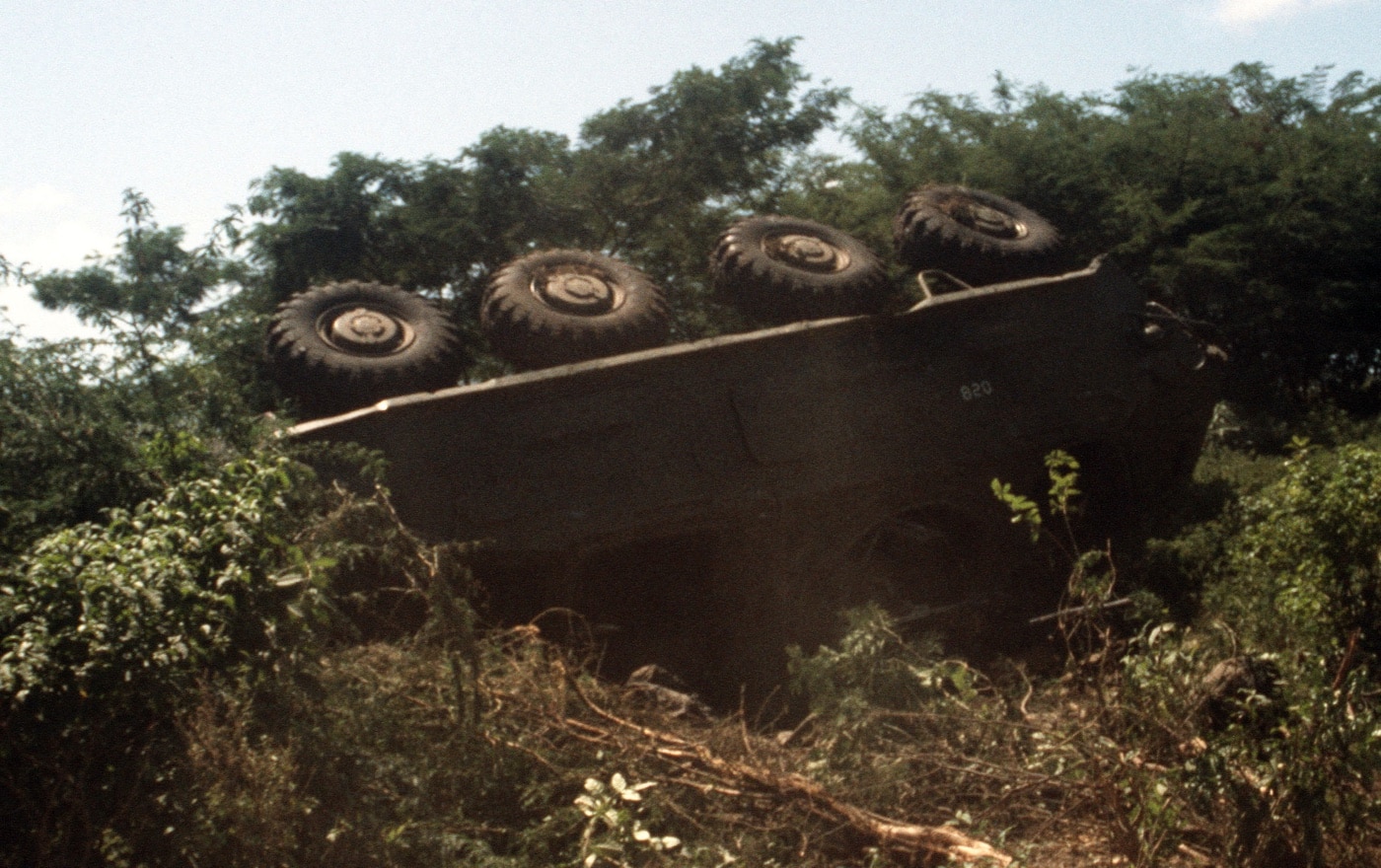
What may have also escaped the notice of most Americans was the unexpected aggressiveness that the Cubans displayed with their armored vehicles, resulting in the only American armored engagement in the Western Hemisphere.
The Case for War
“On the small island of Grenada at the southern end of the Caribbean chain, the Cubans, with Soviet financing and backing, are in the process of building an airfield with a 10,000-foot runway. Grenada doesn’t even have an air force. Who is it intended for?
“The Caribbean is a very important passageway for our international commerce and military lines of communication. More than half of all America’s oil imports now pass through the Caribbean. The rapid build-up of Grenada’s military potential is unrelated to any conceivable threat to this island country of under 110,000 people, and totally at odds with the pattern of other Eastern Caribbean States, most of which are unarmed.
“The Soviet and Cuban militarization of Grenada, in short, can only be seen as power projection into the region, and it is in this important economic and strategic area that we are trying to help the governments of El Salvadore, Costa Rica, Honduras and others in their struggles for democracy against guerrillas supported through Cuba and Nicaragua.”
– President Ronald Reagan, in a nationally televised speech on March 23, 1983.
Selwyn Strachan, the Grenadian Minister of Mobilization stated publicly in 1981: “that Cuba would eventually use the new airport to supply their troops fighting in Africa, and the Soviets would also find the runway useful because of its strategic location astride the sea lanes and oil transport routes…”
Enemy at the Ready
The U.S. invasion of Grenada had just begun, and it appeared that the assault troops were already in trouble. The Lockheed AC-130 gunships sent to support the United States Army Rangers landing were equipped with low-light TV sensors and these immediately showed that the Point Salines runway had been blocked with boulders, construction vehicles, and a tangle of pipes and cables to prevent aircraft from landing.
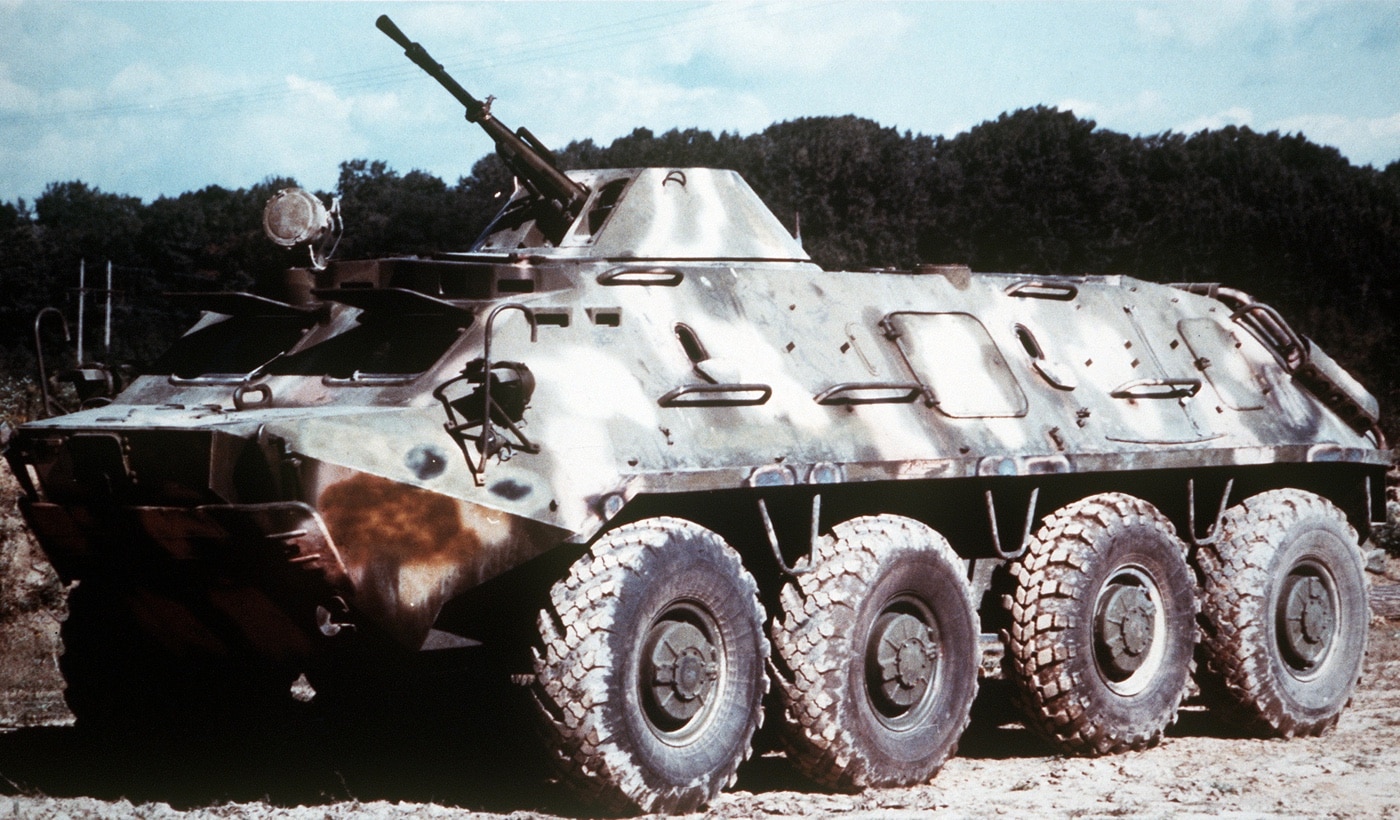
The decision was made to drop the Rangers from low altitude, and they jumped from the lead Lockheed MC-130 planes at just 500 feet. Nearly 700 Rangers were floating down in their parachutes while they were engaged by small arms fire from Cuban troops were clearly ready for their arrival. Several ZU-23-2 twin-barreled 23mm anti-aircraft (AA) guns and a ZPU-4 quadruple 14.5mm AA gun, positioned above the Point Salines runway were firing on the MC-130 transports.
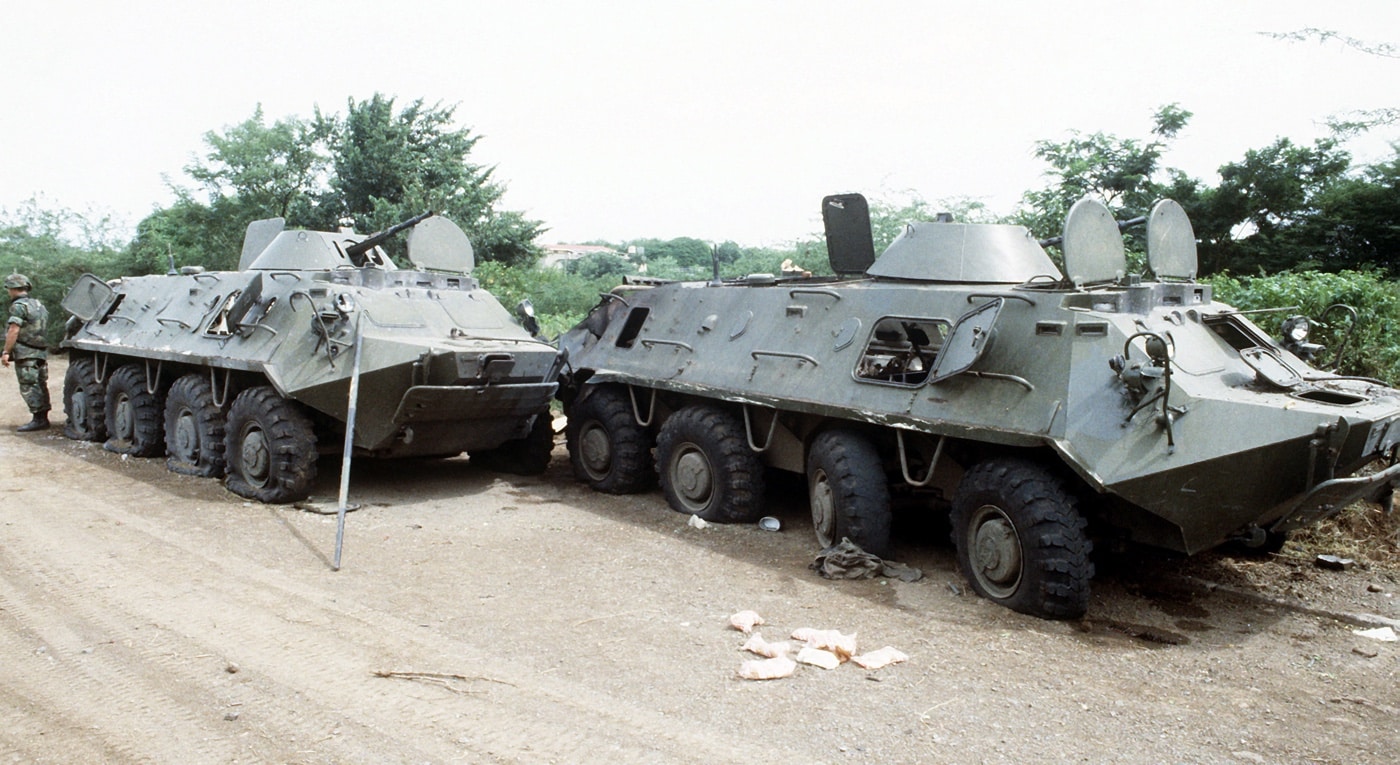
The first group of Rangers were scattered along the length of the 10,000-foot runway and while the men struggled to get out of their parachutes, two Soviet-made BTR-60 armored personnel carriers (APCs) appeared at the end of the runway and quickly began to close on the American airhead. The KPV heavy machine guns mounted in the BTRs began to chatter, and soon 14.5mm rounds were splattering off the tarmac among the American troops.
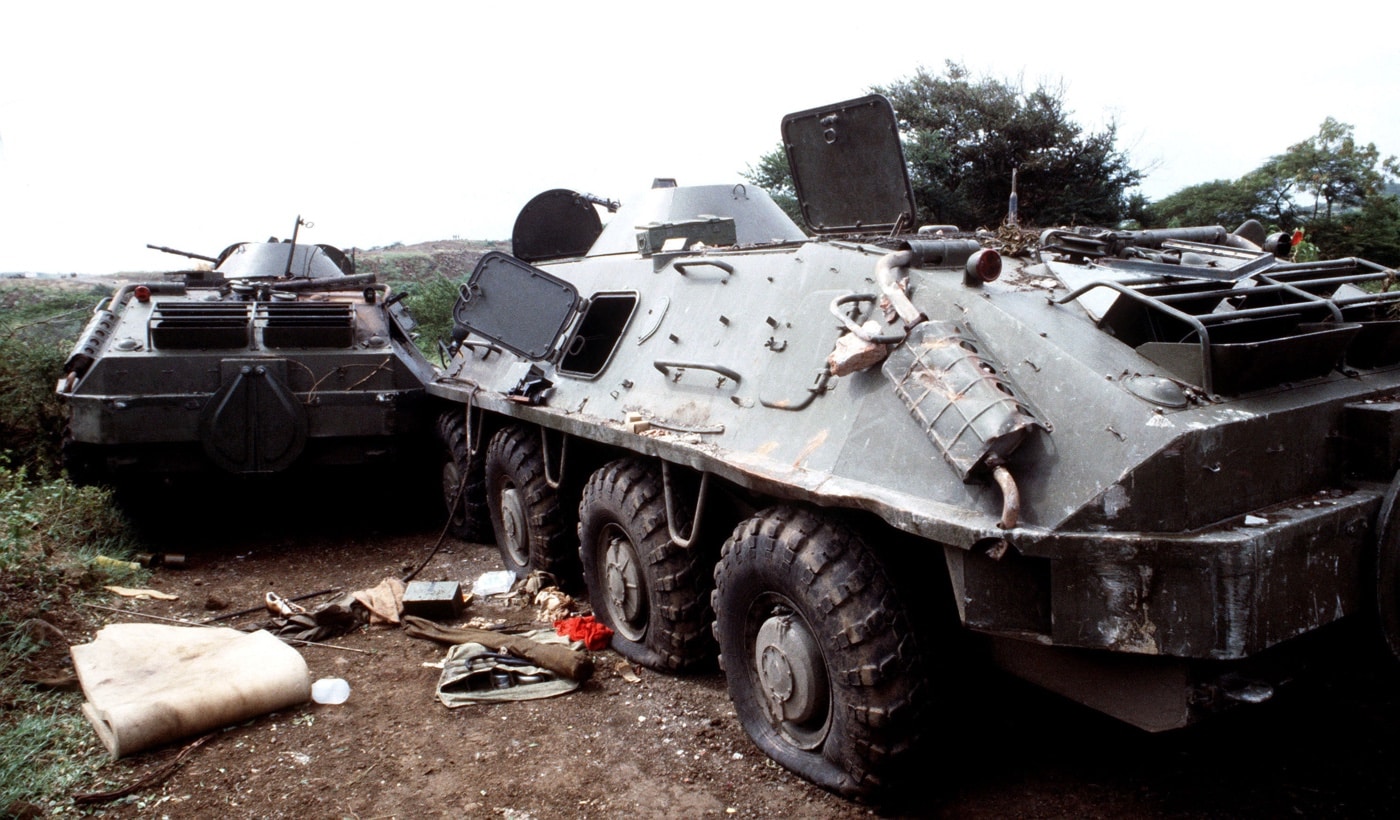
As the People’s Revolutionary Army BTR-60s quickly closed the range, it may have appeared that the Rangers’ drop zone would be overrun. However, the American Rangers were tougher than the communists expected. When the armored vehicles reached the mid-point of the runway, the BTRs were suddenly struck with hollow-charge anti-tank rounds. Fast-acting Rangers set up M67 recoilless rifles and immediately scored hits with 90mm HEAT rounds. This anti-tank miracle came just in time, as the sky above was filled with the descending parachutes of the next wave of Rangers.
Supported by two AC-130 gunships circling overhead, the second group of Rangers immediately assaulted the 23mm AA guns positions atop a hill near Point Salines airfield. Within 10 minutes, the AA guns were silent too. Most of the American transports had been hit at least once by their fire. This is how the invasion of Grenada began on the morning of October 25, 1983.
American Forces Engaged from Beirut to Grenada
Operation Urgent Fury was already fast and furious as America’s Rapid Deployment Force, including elements of the 82nd Airborne Division, the U.S. Marine Corps, U.S. Army Delta Force, and the U.S. Navy SEALs, moved to secure the island from revolutionary Grenadian and Cuban communist forces.
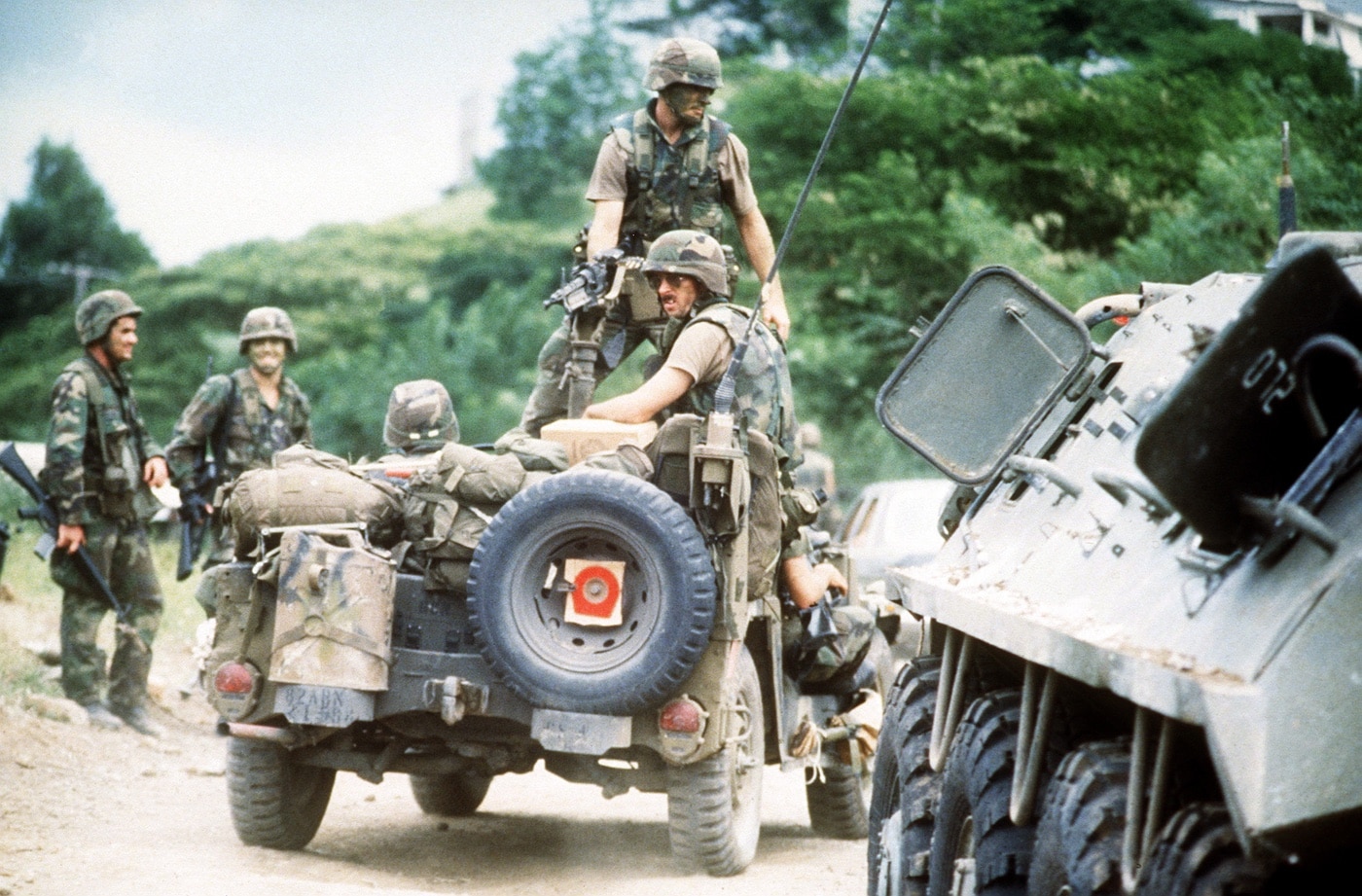
President Reagan’s concerns about the communist forces stationed there grew to a point where he directed US forces to Grenada to guarantee the safety of 600 American medical students on the island. The action in Grenada came just two days after the deadly terrorist attack on the U.S.M.C. barracks in Beirut, Lebanon where a suicide truck bomb killed 220 Marines, 18 sailors, and 3 soldiers. The Cold War was quickly escalating to a boiling point.
Order of Battle
Communist forces on Grenada, comprised of the Grenadian “People’s Revolutionary Army” plus more than 700 Cubans (many posing as “engineers”) had no tanks, but they did have other armory vehicles including eight BTR-60 APCs and a pair of BRDM-2 armored cars. The BRDM-2 amphibious armored scout car was armed with a KPVT 14.5mm machine gun and a PKT 7.62mm co-axial machine gun. Its welded steel armor was 14mm at its thickest (in the hull nose), with the turret frontal armor at 10mm.
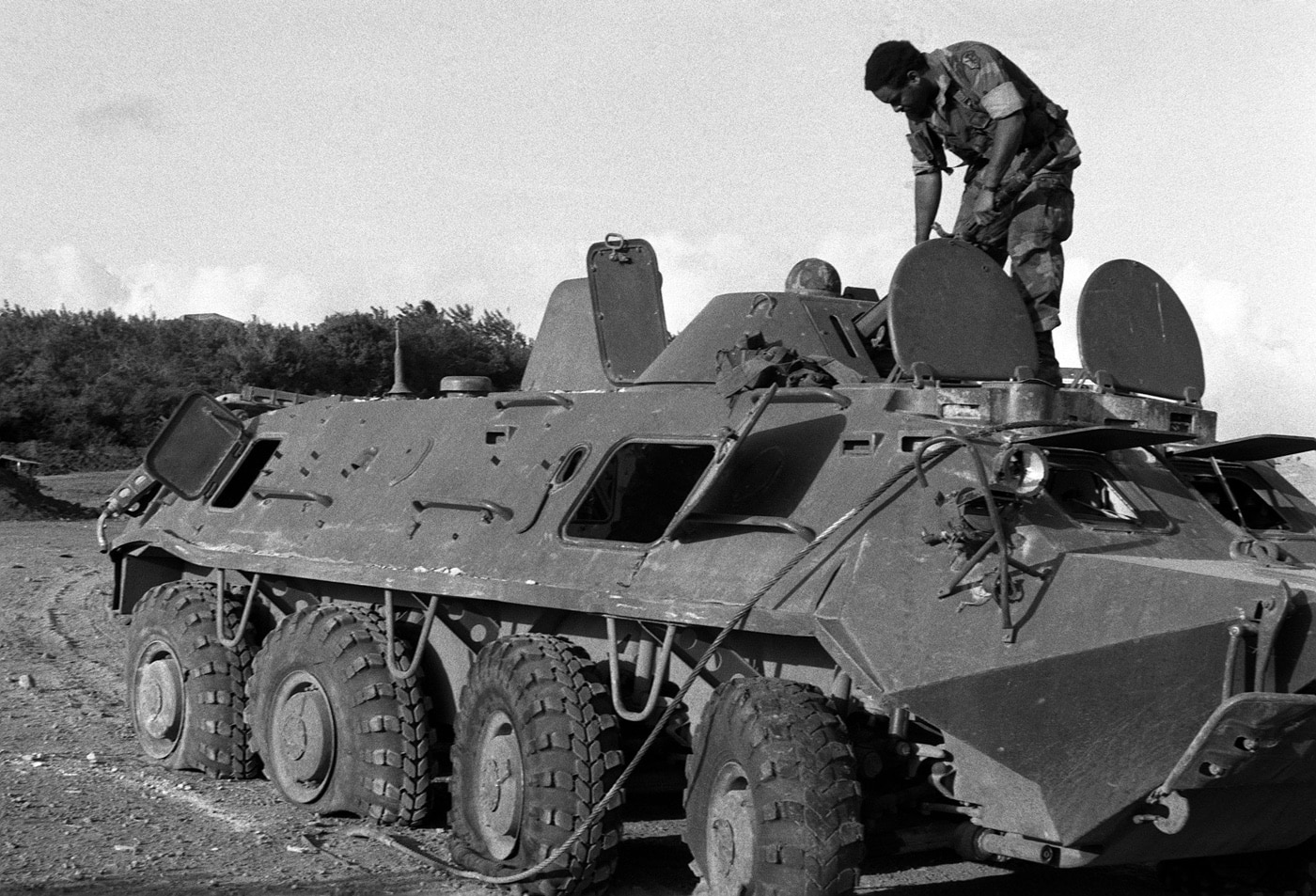
The BTR-60 armored personnel carrier had the same armament. The BTR-60’s thickest armor is on its turret front at 10mm, and protection on the hull front is 9mm.
American troops were alerted to the presence of wheeled armored fighting vehicles on the island, and the assault troops arrived on Grenada with M72 LAW rockets, M47 Dragon AT missiles, and the venerable M67 90mm recoilless rifle. All would see action during the three-day battle for the island.
Armored Counterattack at Point Salines
By mid-afternoon on the first day, the communist troops regrouped and counter-attacked the American positions near the Point Salines International Airport. Three BTR-60s led the attack, which drove into the Ranger platoon’s forward positions. The Rangers responded with fire from their rifles, M60 machine guns, LAWs, and a 90mm recoilless rifle.
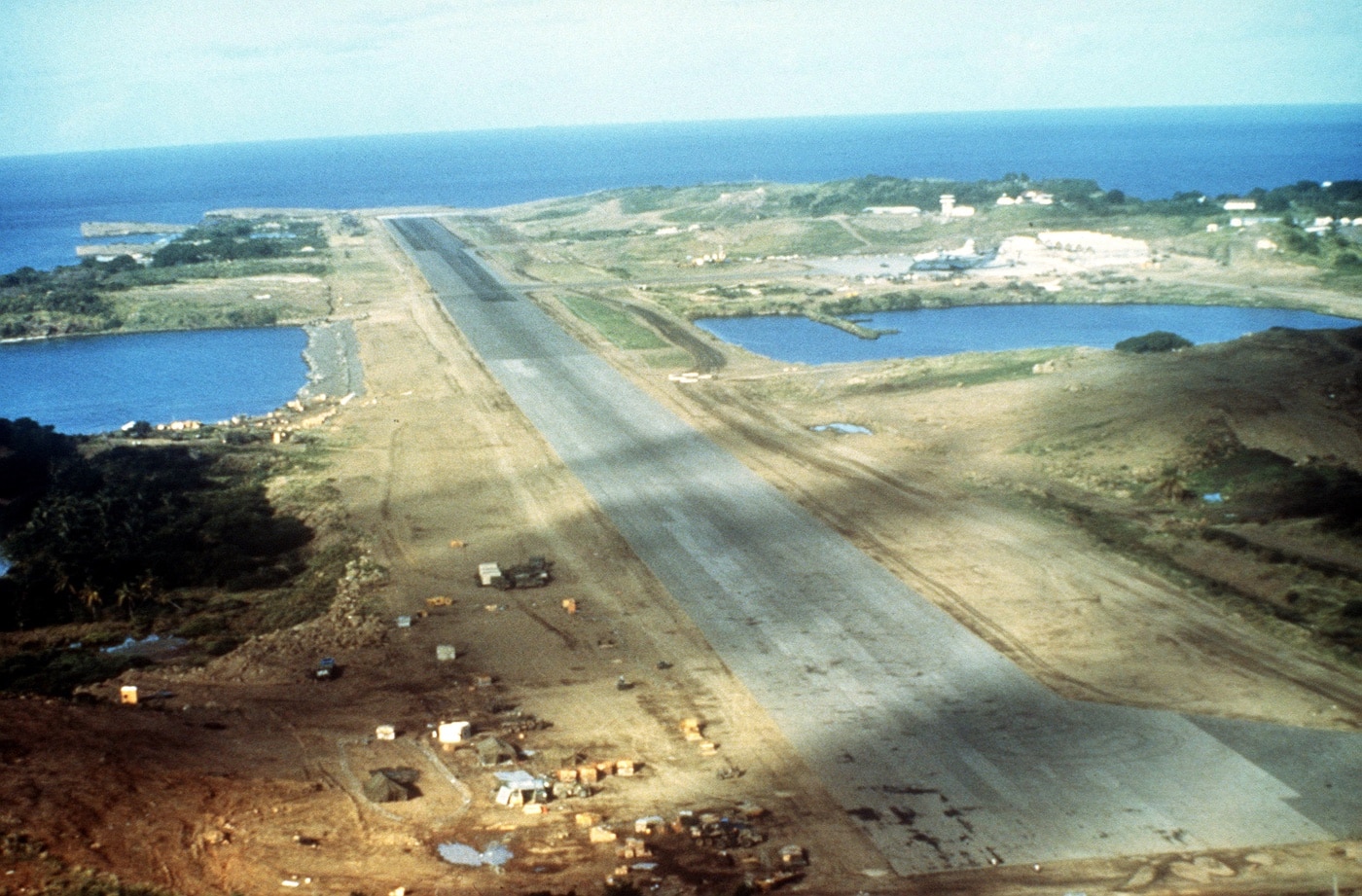
The first two BTRs were hit, with the lead vehicle struck in the turret mantlet. The second BTR crashed into its rear, and both were knocked out of the fight. The third BTR-60 attempted to retreat but was hit in the rear.
An AC-130 gunship was called to the scene and finished off the third BTR.
A Rough Time for SEAL Team 6
During their raid on Radio Free Grenada, SEAL Team 6 fell afoul of a Grenadian force supported by a BRDM-2 armored car. Caught without anti-tank weapons, the SEALs were forced to retreat after destroying the radio transmitter. They escaped into the ocean and swam to safety aboard the USS Caron (DD-970), a Spruance-class destroyer supporting the combat operations offshore.
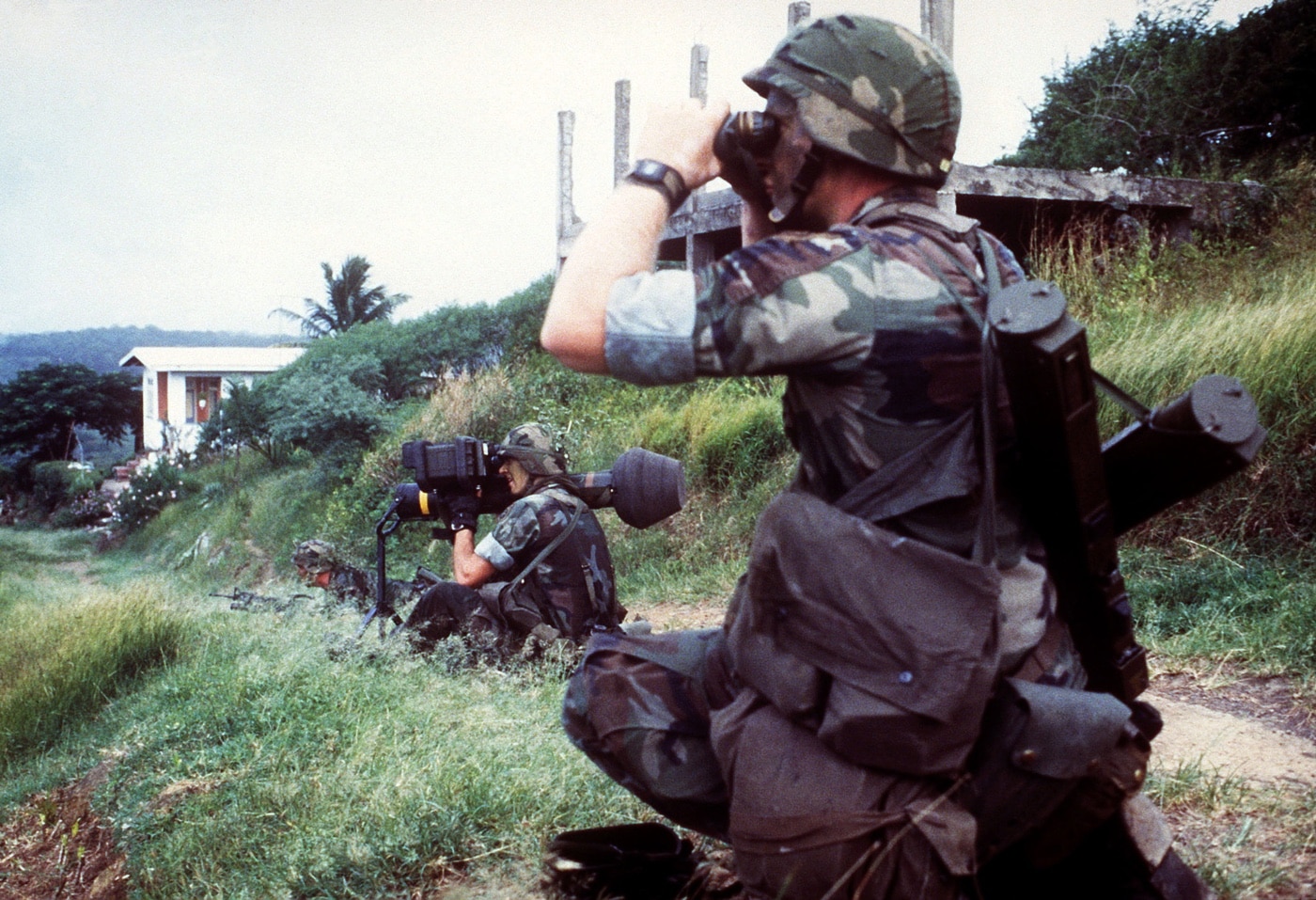
During the SEAL’s October 25th mission to rescue Governor Gerald Scoon at his mansion in St. George, the teams again came up against Grenadian armor.
After the SEALs reached the Governor’s residence without opposition, BTR-60s quickly appeared and trapped the operators in the mansion — hammering the building with their 14.5mm KPVT machine guns. Despite several airstrikes the SEALs remained trapped for nearly 24 hours.
U.S. Marines with M60 Tanks
Meanwhile, the Leathernecks of the 22nd Marine Amphibious Unit, diverted from a deployment to Lebanon, and landed four M60 main battle tanks at Grand Mal Bay. By the next morning, they had advanced to the Governor’s mansion to relieve the SEALs and rescued Governor Scoon.

Soon after, the fast-moving Marine tankers engaged and knocked out a BRDM-2.
After three days, communist resistance evaporated, and the armored engagements of Grenada were over. They were unique as the only time U.S. forces have engaged enemy armor in this hemisphere.
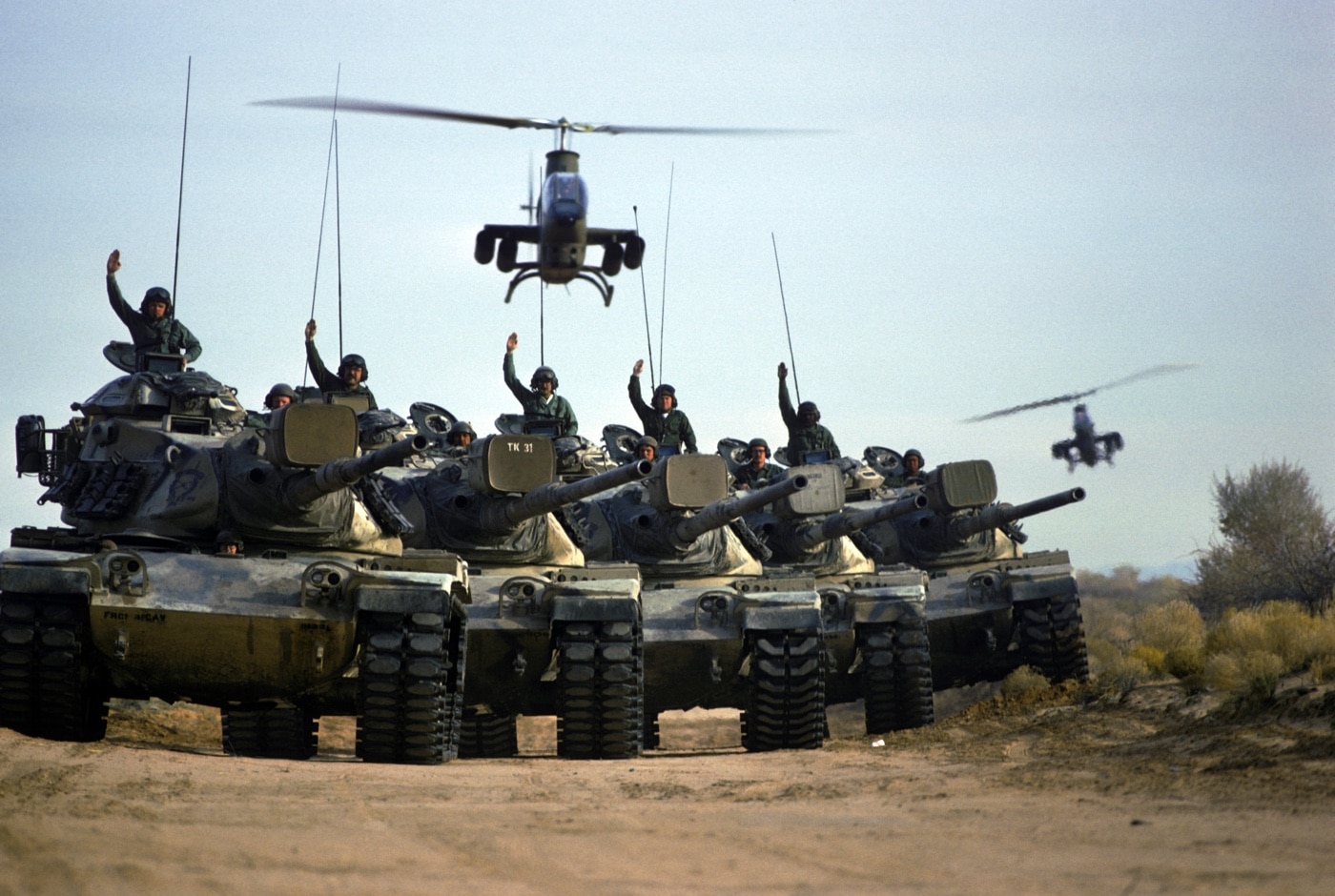
While the mission was a success, it was not bloodless. Nineteen American troops were killed on Grenada and nearly 120 were wounded. Communist forces lost 5 dead with about 350 wounded. Of the eight enemy armored vehicles on Grenada, Americans destroyed seven of them.
This was the price to halt Soviet and Cuban communist expansion in the Caribbean. The American students on the island were returned safely to the U.S.A.
BTR-60: Unexpected Adversary
While intelligence reports noted the existence of BTR-60 armored personnel carriers on the island, the planners of Urgent Fury certainly did not expect them to be used aggressively (by their Cuban crews) to contest the Rangers’ airhead. Consequently, American troops found themselves in a pitched battle against enemy armored vehicles within the Western Hemisphere.
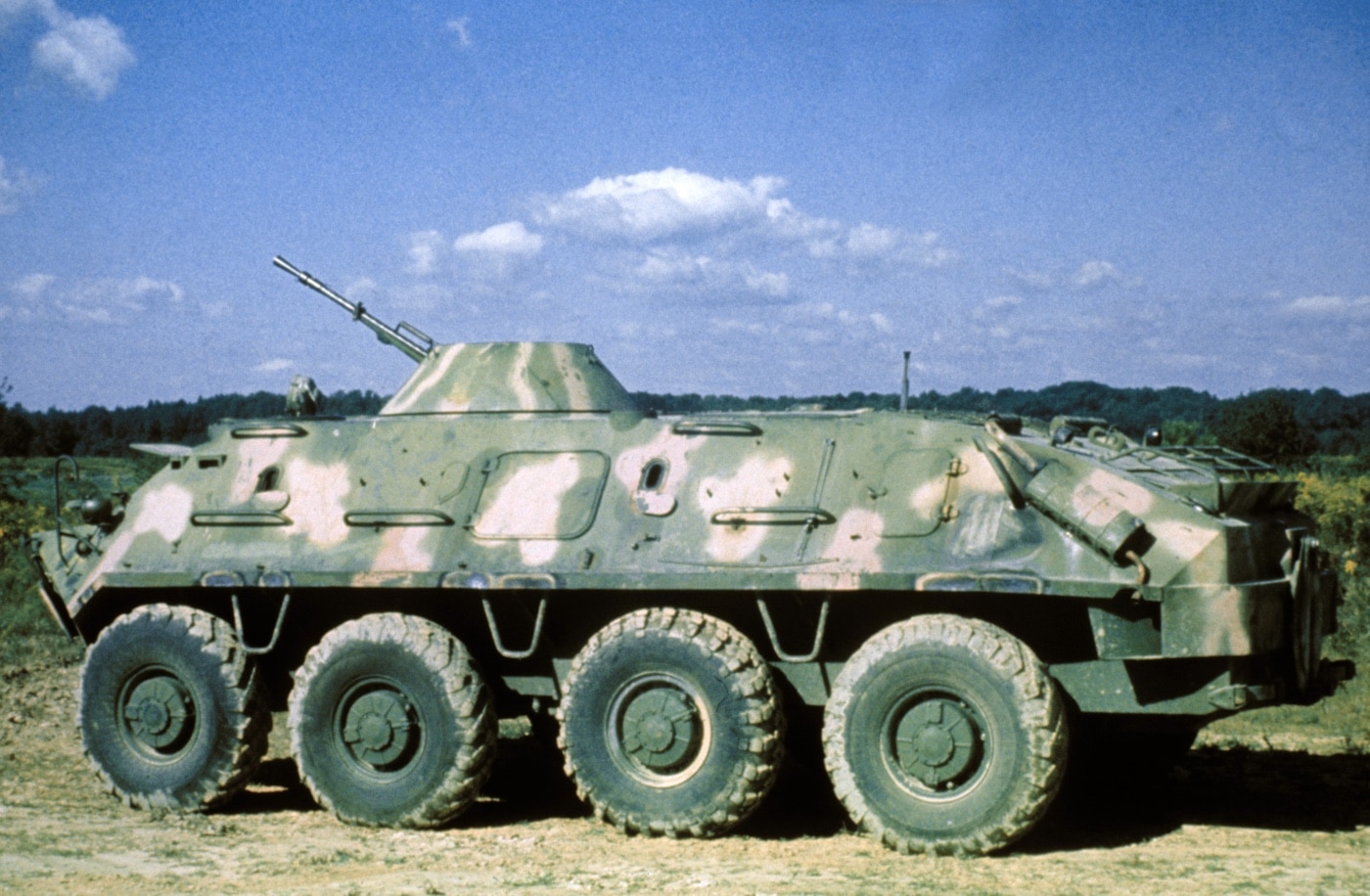
To provide some background on the BTR-60, the following information comes from a US Army evaluation of the BTR-60 written in 1989:
Versatility, lethality, and deployability of the BTR-60
The BTR is fairly lethal for a wheeled vehicle. It has two of the Soviet Union’s most durable machine guns mounted in the turret. The most powerful of the two is the 14.5mm KPVT. It has an effective range of 2000 meters and can fire at the rate of 600 rounds a minute. The armor-piercing round of the 14.5mm KPVT can penetrate 32mm of armor at a range of 500 meters and 20mm at 1000 meters…
The other machine gun, mounted coaxially, is the 7.62mm PKT. It has an effective range of 1500 meters and can fire 650 rounds per minute. It can penetrate 8mm of armor with its armor-piercing round fired from 500 meters…The BTR has stowage space for two AGS-17 automatic grenade launchers. The AGS-17 can also be mounted on the outside of the vehicle and fired from the inside…
Looking Back on the Danger
Despite the careful preparations made for the attack on Grenada, the aggressive use of the BTR-60 and BRDM-2 armored vehicles could have created a disaster in the landing zone at Point Salines.
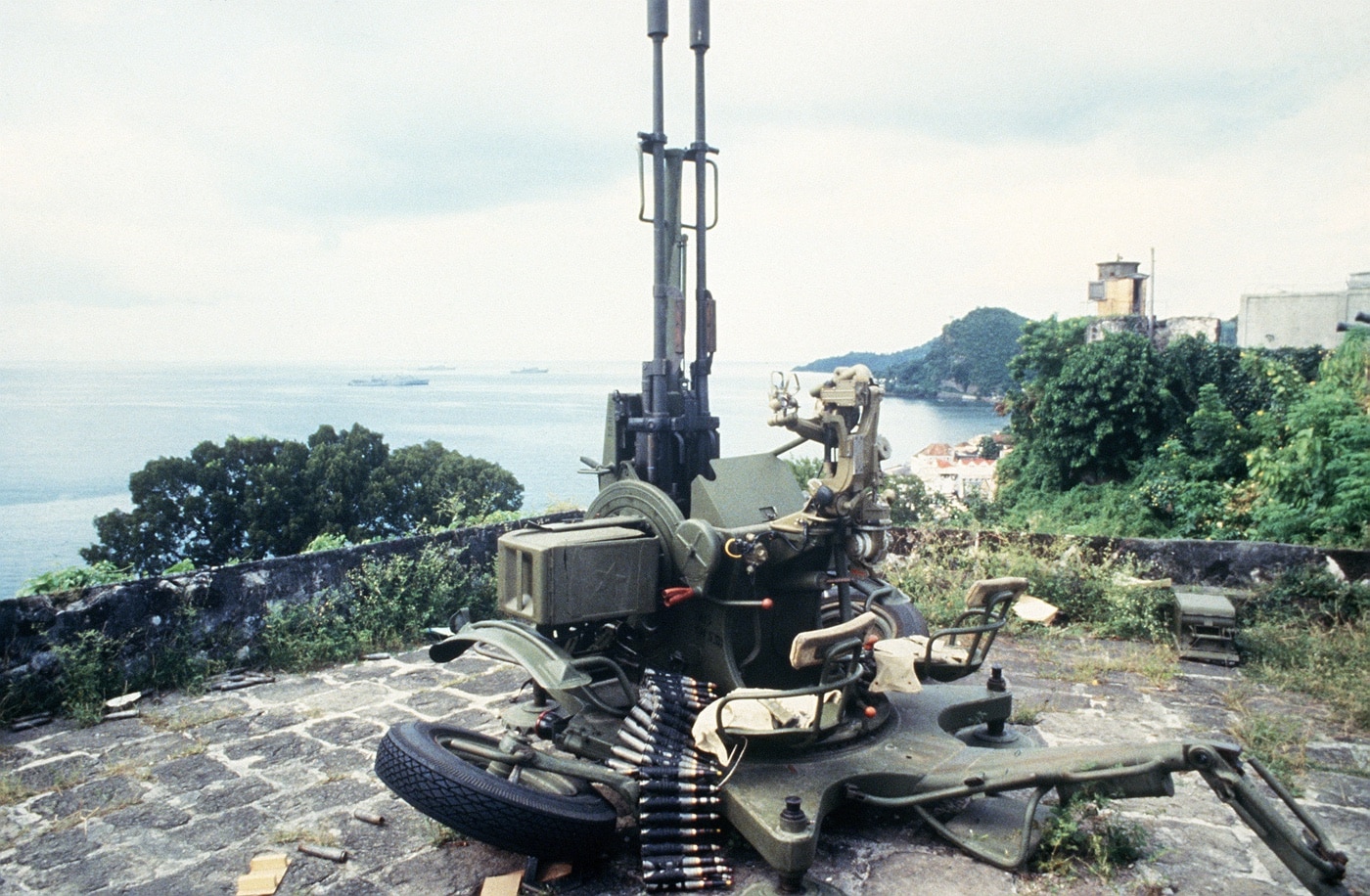
Lt. Col. George A. Crocker of the 82nd Airborne Division wrote in Grenada Remembered: A Perspective, A Narrative Essay on Operation Urgent Fury:
“The 82nd has been criticized for being slow to move out of the airhead, and too deliberate in expanding the operational area to take the strategic plum of St George’s city, but let’s review from the worms-eye view:
-The Rangers had incurred unexpected opposition.
-The Frequente arms cache had revealed large amounts of weapons, enough to give credence to some intelligence reports of several thousand enemy.
-The airhead had been counterattacked by armored vehicles.
-The Rangers had lost a gun Jeep and crew to an ambush just east of the airfield.
A Personal Perspective
Operation Urgent Fury has often been passed off as a lesser military engagement, without any particular significance. But the island location of America’s only armored clash in the Western Hemisphere is much more important than just the answer to an AFV trivia question.
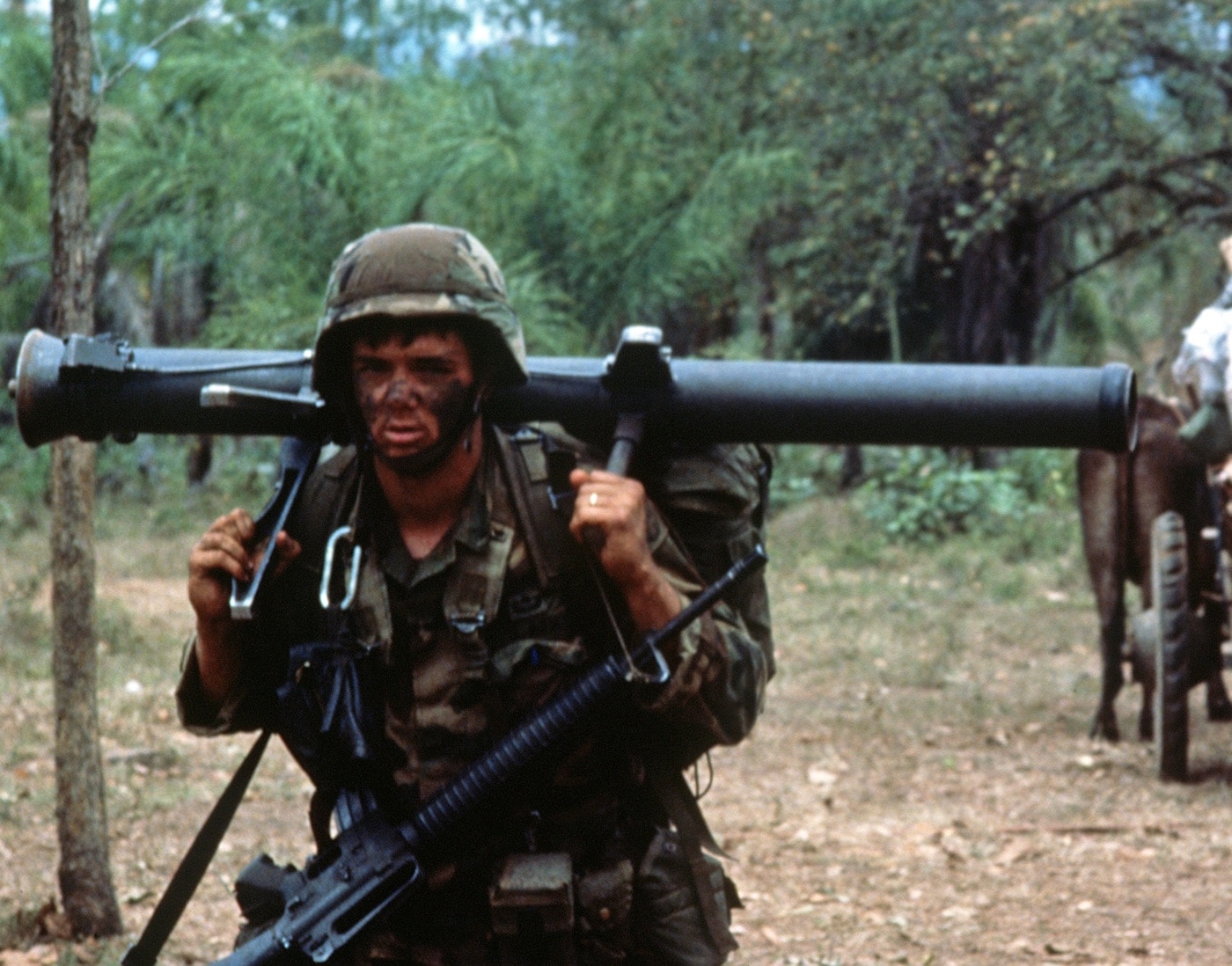
The Soviets and their Cuban partners were preparing for major operations in Central and South America, with Grenada as an important base. In the opinion of many, they had to be stopped.
Despite several tense moments, particularly at the beginning of the operation, the communist threat in Grenada was removed. Most of America never heard much about it. Maybe that is for the best, and we can talk about it in detail now, more than forty years later.
I recently lost a dear friend who was with the Marines on Grenada during Urgent Fury. It was just one of many violent places he visited in his long career in the U.S.M.C. We talked about Grenada a couple of times and he’d always say something like: “Hell Lem, we barely had time to break a sweat. It wasn’t much fun, but we’ve seen a lot worse.” True enough, I suppose, but America still needs to know about the sacrifices made there. And to Major Mac, I say farewell and thanks for all the good times. Semper Fi!
Editor’s Note: Please be sure to check out The Armory Life Forum, where you can comment about our daily articles, as well as just talk guns and gear. Click the “Go To Forum Thread” link below to jump in!
Join the Discussion
Continue Reading
Did you enjoy this article?

 530
530






